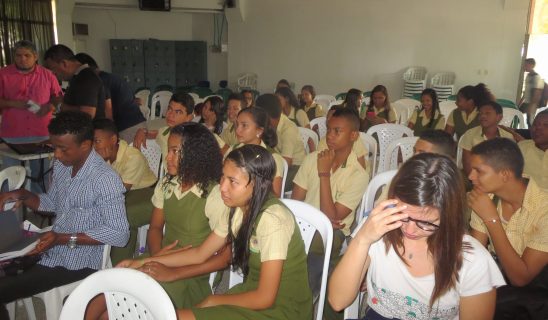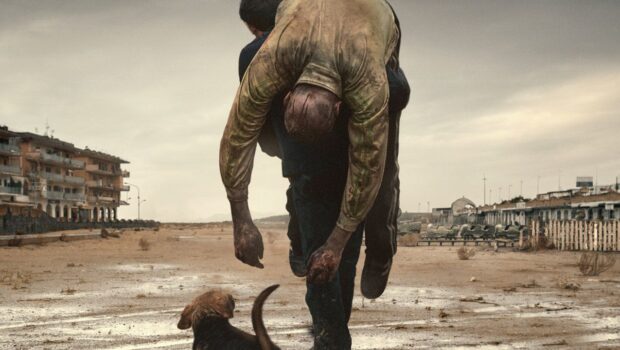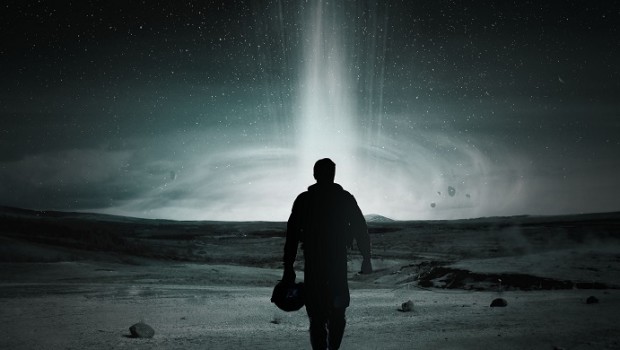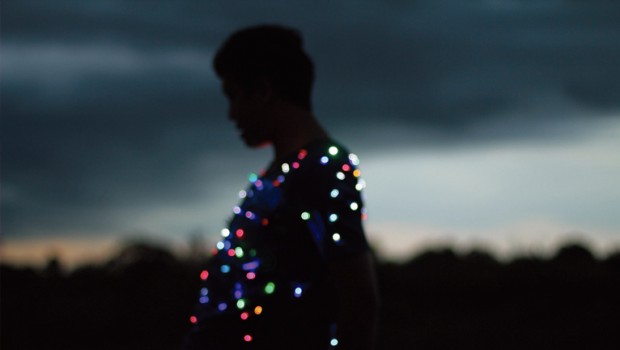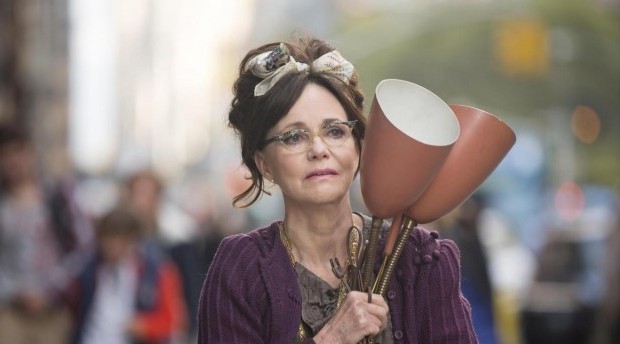“Cine de los Barrios:” A door to another world
Patricia Gras
The uniformed 10th graders anxiously wait. The film is about start. It’s a regular school day at the Environmental education Institute in Cartagena, Colombia, but today they’ll spend a full two hours watching a free movie. They are about to benefit from a twenty-year-old project, “Cine en Los Barrios,” (Film in the neighborhood.) which takes movies to low-income communities in the city.
The oldest film festival in Latin America, the Cartagena Film festival sponsors the project.
Last year about 300 screenings were held in schools, libraries, prisons, universities and other institutions in the city. Today the film to be shown delves into the current topic of the century here, the Colombian peace process. “Silence of the Guns” is an intimate documentary. The award winning director and screenwriter Natalia Orozcco covered the peace process that began in 2012. She gained access to all sides. The FARC guerrillas, the Government, the paramilitary and the negotiators so this is about that process.” said Production assistant Sergio Godoy.
The founders Victor Nieto and Jorje Garcai Usta had created the program to create ties between the creators of film and marginalized communities. They also wanted to give children an opportunity to experience full length features. “Our goal is to create long term audiences and for that we have to start with the children. For them to have the experience to go into a movie house or in this case wherever we can show the film and watch it collectively and then be able to discuss it.” Said programmer Frank Patino.
The lights turn off. The movie is about to begin. Then the projector breaks down. “Sorry we are having technical difficulties.” Says the assistant producer. The students are curious who we are. Three women with notepads asking questions and taking pictures. As we wait one student approaches us and shares her thoughts. Sandy Mejia Hoyo is sixteen. “We are growing in knowledge with this. We learn more about the world this way. This will be an unforgettable event.” she adds.
Natalia Orozco worked on the film for four years and one of her ultimate goals is sharing it with Colombians who have little access to this art form. “I am a defender of the arts such as music, theatre and film for the impact they can have on people. We have a debt, the cultural Colombia with the Cartagena that is in the periphery, marginalized, forgotten, discriminated. I think the country owes it to them. These less favored communities are the ones that take the burden of the nation on their shoulders and that is where we have to fight real hard so that they can become cloaked with hope. It is also important for the directors of the films, ambassadors, artists, and entrepreneurs to meet with this Cartagena, the one that can attend or afford to go to the Cartagena Festival and start a much-needed dialogue. “Said Orozco.
Frank Patino, the programmer for Cine en Los Barrios, hopes the students can relate to the film. “We love to show Caribbean culture films. We have a way of life. We live day by day. We feel a lot of joy while we face a lot of sadness. Our region is very poor and convulsed, so our movies have to reflect that. Our goal is to integrate these neighborhoods with the festival of Cartagena.”
Last year at this school, the festival showed a film about drug addiction. “It’s important. We don’t have money to go to the movies. We don’t have that luxury and I love it. I am fascinated by it. I really enjoy it” said Luis David Aguila Barrera 14. Moments later they walked in with a set of new sound equipment to project the film.
For the next two hours the neophyte movie goers watch a documentary that is emotionally challenging to absorb even for an adult. “When the Guns Go Silent” is a historical documentary. It covers the peace dialogue between the FARC with the Colombian Government after 50 years of fighting. This war has claimed the lives of 8 million Colombians and displaced another 7 million. Almost everyone here knows someone who’s been directly impacted by this conflict. So how did the groups involved reach a historical peace settlement? The film walks you step by step as mortal enemies begin to find common ground and decide they all have had enough of the bloodshed. In one of the most impactful moments of the film, victims of all the parties, the military, the guerrillas and the paramilitary private armies sat in the same room listening to each other. Finding each other’s humanity through their tragic losses. But for many in this nation, including some of these children, the peace process should have never been signed and peace still seems elusive.
“It’s a documentary that took a lot of work, but I believe that peace will not happen. My family suffered from this war and we were displaced. It’s ugly. There will never be a stable peace.” Says 15-year-old Andrea Betina Diaz.
The documentary filmmakers understand the unfavorable reactions to the peace process. “Two weeks ago, we took this film to the city where many young soldiers had been massacred the year before and afterwards we discussed it with the children. It was a beautiful day” says organizer Sergio Godoy.
The film director Orozco shared many in the audience when they project this film have lost a loved one, especially the children and women. “They are usually the ones that vehemently and forcefully debate about the need to continue working and believing with hope in peace.” They often say. “We are the ones who suffered and we do believe that it is worth it to fight for peace even if it is imperfect. In the end of these discussions there is not a dry eye in the room.” Says Orozco.
By the end of the film, many students were dozing off. Some seemed bored, others curious what would come next, but none seemed surprised by the gravity of the subject matter. Most had seen a film for the first or second time in their lives and organizers hoped they would continue to appreciate the art form throughout their lives. Orozco hopes it can also impact their lives. “This new generation, if we don’t contaminate it with our own grudges, revenges and hatreds is a generation that is conscious that this nation must fight for justice without violence.”
*This work was produced during the Gabriel García Márquez Fellowship of Cultural Journalism 2018, organized by FNPI, with the support of the Ministry of Culture of Colombia and The Cartago Foundation.
 Patricia Gras is a seven-time Emmy Award-winning journalist. She is the founder and producer of the online series Passion Time.
Patricia Gras is a seven-time Emmy Award-winning journalist. She is the founder and producer of the online series Passion Time.
©Literal Publishing
Posted: April 1, 2018 at 12:06 pm


